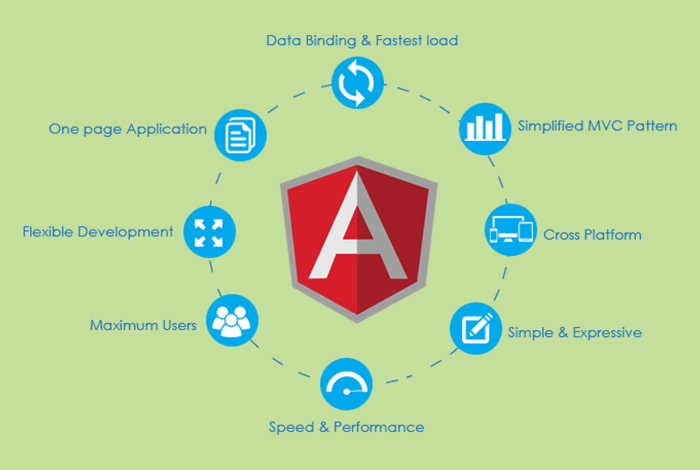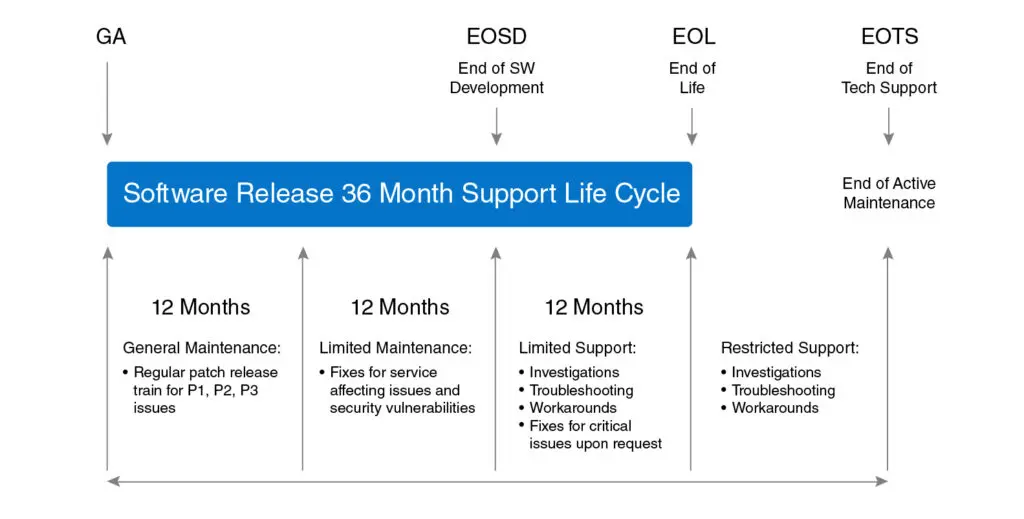AngularJS is one of the frameworks written in JavaScript that is used to develop dynamic single-page applications. JavaScript is used for the actual framework’s development. AngularJS may be made more powerful by utilizing a variety of strategies and libraries that are included with the framework. The entirety of a web page may be broken down into individual components, each of which is built with AngularJS.
In its most basic form, a component is a specialized form of directive that, compared to applications that are not based on components, makes use of a more straightforward configuration. This client-side framework is used to develop numerous progressive web apps and is also growing in popularity.
However, as new technologies come into the market, it is becoming more difficult for AngularJS to survive beside other mature web technologies. Since AngularJS contains a large number of flaws and vulnerabilities, some of which cannot be remedied by upgrading to newer versions and require changes from the ground up, Google has decided to terminate development of the framework and declare it to be in its end-of-life stage.

When we talk about a product or software application reaching its end of life, we generally mean there will be no further upgrades made to it in the foreseeable future. If the software contains any vulnerabilities, the product owner won’t fix them, and any organizations that depends on the software will have to deal with the consequences on their own. As there is no AngularJS support, there will be no more bug patches, functionality enhancements, or upgrades.
End-of-Life: What Does That Mean for You?

When we consider the possibility that these decisions can shift throughout time, it becomes clear to everyone that shifts in perspective and choices are unavoidable. Companies are required to explore other solutions, but because they don’t have a lot of options, they either have to give up their product or embrace any other new solution.
At this time, AngularJS does not have any problems. But, in the future, bugs could be caused by changes in technology or upgrades to browsers. And if that happens, you will be completely on your own.
It is necessary to make the decision to switch away from this framework because it is becoming increasingly difficult to satisfy the goals and specifications of AngularJS. As there are more modern and superior alternatives available on the market for developing web apps, we need to come to terms with the fact that AngularJS has reached the end of its support phase. It won’t be able to compete with frameworks that are always being developed further and improved upon. Thus, it won’t be a good option to continue with the framework in the future.
How We Can Continue to Support AngularJS
For creating a new application, we have a pretty straightforward answer: we will not use AngularJS because there are a lot of other solid alternatives available on the market, such as VueJS or ReactJS. The businesses that are already utilizing AngularJS will require assistance for AngularJS. However, developers working for those businesses may themselves be able to fix a couple of the issues or vulnerabilities that they discover in the code.
But there is no need to be concerned because AngularJS applications will continue to function normally for some time. Nevertheless, businesses shouldn’t procrastinate any longer because whenever technologies advance, browser support for older techs get eliminated, making it necessary to move away from antiquated frameworks. Nobody wants to get to the point where there is no longer any possibility of changing things. But, for now, organization’s can easily rely on AngularJS as they already have skilled professionals who can help fix bugs and make it much better.
Developing a fresh migration strategy is something that must be done immediately. The creation of a migration plan is determined by each individual business case. In addition to being aware of the requirements, it is important to have an accurate time and effort estimate. It is critical to make effective use of the resources that are available. The decision to migrate instantly, rewrite an application from scratch, or upgrade it slowly is one that must be made by each company.
Moving your application to Angular.io, which is the newest generation of the project, is one step that will make the transfer go as smoothly as possible. Your current development team should have little trouble understanding the differences between Angular and their previous platform, as it is a solid platform for application development. But this is a choice that the people in charge of the project need to start thinking about right away.
Conclusion
When we talk about the end of life of a piece of software, it means that a lot of different things are going to be affected, and teams should typically look at migration. However, moving to a new system right away may result in complications as migration typically calls for a significant amount of resources and new employees who are skilled in the newer technologies.
Thus, the migration process should be preceded by the creation of a detailed plan. In the meantime, things will need to be managed internally, through the use of patches and management of software in their end-of-support stage.

